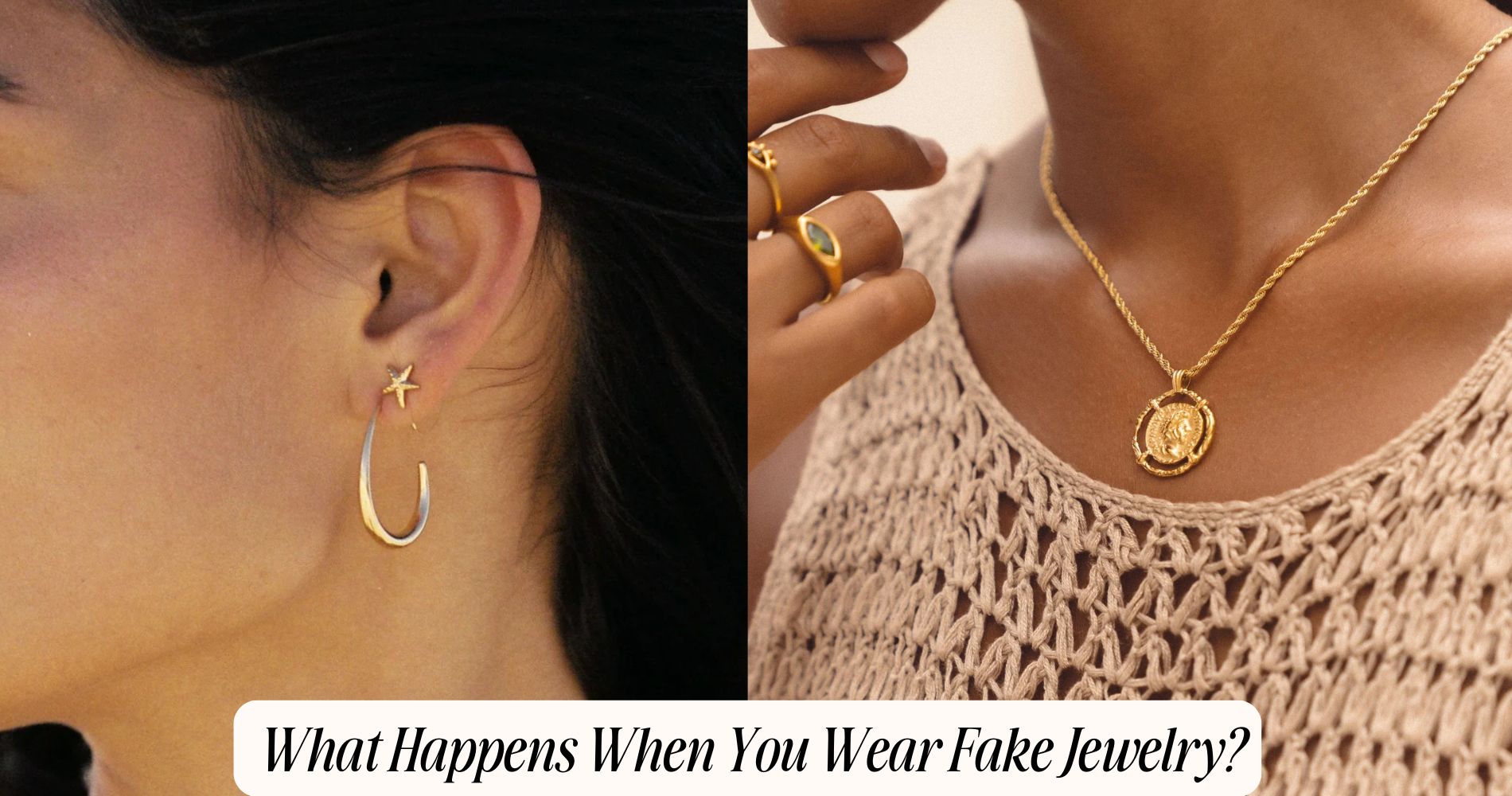
What Happens When You Wear Fake Jewelry?
Ever wondered what happens when you wear fake jewelry? It can lead to skin irritations or allergic reactions caused by allergens like nickel. Fake pieces also tend to tarnish and break easily, meaning you’ll replace them often—costing more in the long run. Beyond that, they can affect your confidence and may not follow sustainable production practices, raising environmental concerns. To protect your skin and elevate your style, consider waterproof jewelry that’s durable, hypoallergenic, and built to last.
Skin Irritations and Allergic Reactions
When you wear fake jewelry, your skin might react negatively, especially if it's sensitive or prone to allergies. Metals like nickel, often used in costume jewelry, can provoke skin sensitivity. You might notice redness, itching, or a rash, indicating allergic contact dermatitis.
To prevent these issues, it's essential to understand the materials in your accessories. Testing jewelry on a small skin patch can help identify potential reactions before full-scale wear. Consider seeking hypoallergenic options or applying clear nail polish to jewelry surfaces to create a barrier.
Allergy prevention isn't just about avoiding discomfort; it's about ensuring your skin's health. By being proactive, you can enjoy the aesthetic appeal of jewelry without compromising your skin's well-being.
Tarnishing and Discoloration
Although fake jewelry can be an affordable and stylish alternative, it often suffers from tarnishing and discoloration over time. This happens because the metals used, like nickel or brass, react with moisture and air, causing an unsightly look.
To combat this, focus on tarnish prevention by keeping your pieces dry and clean. Always remove your jewelry before showering or swimming, as water accelerates tarnishing.
Additionally, proper jewelry storage plays an essential role. Store each item separately in a cool, dry place, ideally in a zip-lock bag or a lined jewelry box, to minimize exposure to air and humidity.
Impact on Longevity and Durability
Fake jewelry often lacks the longevity and durability of its genuine counterparts due to the materials and construction methods used. Cheaper metals and adhesives in fake pieces are prone to breaking or corroding, impacting their longevity.
Longevity factors include the type of metal alloy used; lower-grade materials can wear quickly. Durability concerns arise from weak clasps and joints, which are more likely to fail under stress.
Unlike genuine jewelry, fake pieces often have thin coatings that chip easily, reducing their lifespan. You might notice plating deterioration, revealing unattractive base metals.
To maximize wear, handle fake jewelry with care, avoiding water and chemicals. While you can enjoy these pieces temporarily, they’ll likely need more frequent repairs or replacements.
Environmental and Ethical Considerations
While considering fake jewelry's appeal due to its affordability, it’s essential to weigh the environmental and ethical implications.
Fake jewelry often lacks sustainability practices, contributing to significant environmental issues. Materials used in counterfeit pieces can be harmful, leading to increased pollution and resource depletion.
Unlike genuine jewelry, which sometimes adheres to ethical sourcing, fake jewelry typically doesn’t prioritize these standards. This can result in exploitative labor conditions, where workers are underpaid and work in unsafe environments.
By choosing fake jewelry, you might unknowingly support practices that harm both people and the planet. To mitigate these impacts, consider alternatives that focus on recycled materials and ethical production.
Being informed about these aspects helps you make responsible choices in your jewelry purchases.
The Risk of Metal Sensitivity
When you wear fake jewelry, you might face the risk of metal sensitivity, a common issue for many. This sensitivity often stems from metal allergies, as fake jewelry frequently contains nickel or other reactive metals.
Your skin can react, leading to redness, itching, or rash. Understanding your skin's tolerance is essential, and you might consider undergoing skin tests to identify any allergies. These tests help determine if your immune system reacts to specific metals, preventing future discomfort.
With this knowledge, you can make informed choices about the jewelry you wear. Opt for hypoallergenic options or those made with non-reactive metals like stainless steel.
Misleading Appearances and Social Perceptions
Though appearances can be deceiving, wearing fake jewelry often leads others to form certain social perceptions about you. Society frequently equates genuine jewelry with higher social status.
When you wear imitation pieces, it might suggest to some that you’re trying to project an image of wealth you don’t possess. This perception can inadvertently affect how others view your authenticity, leading to potential trust issues. People may question your honesty or intentions, wondering if you're genuine in other aspects of life.
Additionally, in environments where appearances are vital, such as professional settings, the jewelry you wear can influence others’ impressions, impacting opportunities and interactions. Understanding these dynamics helps you navigate the complexities of social perceptions when choosing what adornments to wear.
Maintenance Challenges and Care Tips
Understanding how people perceive you based on your jewelry choices is important, but another aspect to reflect on is the practical side of wearing fake jewelry—its maintenance.
Fake jewelry often tarnishes and loses its luster quicker than genuine pieces, making regular upkeep essential. Effective cleaning techniques involve using gentle soap and water, avoiding harsh chemicals that can damage or discolor the jewelry. A soft cloth should be used to dry and polish, ensuring no moisture remains.
For storage solutions, keep your pieces in a cool, dry place, preferably in individual pouches to prevent tangling and scratching. By adopting these strategies, you can extend the lifespan of your jewelry, keeping it looking as vibrant as the day you bought it.
Potential Health Hazards From Toxic Materials
While fake jewelry can be an affordable and stylish option, it's crucial to be aware of potential health risks posed by toxic materials often used in their production.
Many imitation pieces contain substances like lead, cadmium, and nickel that can leach into your skin. These toxic materials might cause allergic reactions, skin irritation, or even more severe health issues with prolonged exposure.
For instance, lead is known for its adverse effects on the nervous system, while cadmium exposure can affect your kidneys and bones. Nickel is a common allergen, leading to itchy rashes and discomfort.
To minimize these health risks, consider checking product labels for material composition or purchasing from reputable brands that prioritize safety standards in their manufacturing processes.
Financial Implications of Frequent Replacement
Even though fake jewelry often seems like a cost-effective choice initially, the financial implications of frequently replacing these items can quickly add up.
As you navigate through the world of accessories, it’s crucial to reflect on how replacement costs impact your overall budget planning. Cheap imitations are prone to tarnishing, breaking, or losing their luster, necessitating more frequent replacements than higher-quality options.
Each time you replace a piece, you're effectively spending more over time, which can strain your finances without you realizing it. By allocating a portion of your budget to higher-quality pieces, you might actually save money in the long run.
It’s all about balancing immediate savings with long-term investment, ensuring your jewelry collection remains both stylish and financially sustainable.
Psychological Effects of Wearing Imitation Jewelry
When you choose to wear imitation jewelry, it can subtly influence your self-perception and confidence levels. You might find yourself questioning your worth, as self-esteem issues can arise from feeling inauthentic.
Wearing fake jewelry can sometimes make you more conscious of others’ perceptions, potentially fueling social anxiety. You may wonder if others notice the difference, causing discomfort in social interactions. This can lead to a cycle where you doubt your image and presentation, affecting your social engagement.
However, it’s important to recognize this internal dialogue and challenge the notion that value is tied to material authenticity. By embracing your unique style and focusing on personal strengths, you can overcome these psychological barriers, cultivating genuine self-assurance regardless of your jewelry choices.
Frequently Asked Questions
How Can I Identify Fake Jewelry at Home?
You can identify fake jewelry at home by examining materials composition and conducting authenticity tests like the magnet test for metals, vinegar test for gold, or inspecting for hallmark stamps. Analyze details for inconsistencies in craftsmanship.
Is Fake Jewelry Water-Resistant?
Fake jewelry isn't typically water-resistant. Its durability varies based on materials like plated metals, which can tarnish or degrade when wet. Always check the specific material used to understand how it handles exposure to water.
Can Wearing Fake Jewelry Cause Green Skin?
Yes, wearing fake jewelry can cause green skin. Jewelry materials like copper react with your skin's acids, leading to discoloration. To avoid skin reactions, choose pieces with better plating or apply a protective barrier.
How Does Fake Jewelry Affect My Skin's Natural Oils?
Fake jewelry can disrupt your skin's natural oil balance, potentially leading to skin reactions. Metals like nickel may irritate, causing redness or rashes. Protect your skin by choosing hypoallergenic options or applying a protective barrier.
Conclusion
Wearing fake jewelry might seem economical, but it's not without drawbacks. You could face skin irritations or allergic reactions, and frequent tarnishing demands constant maintenance. The materials used can pose health risks, and their lack of durability means you'll need replacements often. Ethically, their production might not align with environmental standards. Additionally, wearing imitation jewelry could affect your self-perception and confidence. Weigh these factors carefully when deciding between imitation and genuine pieces.







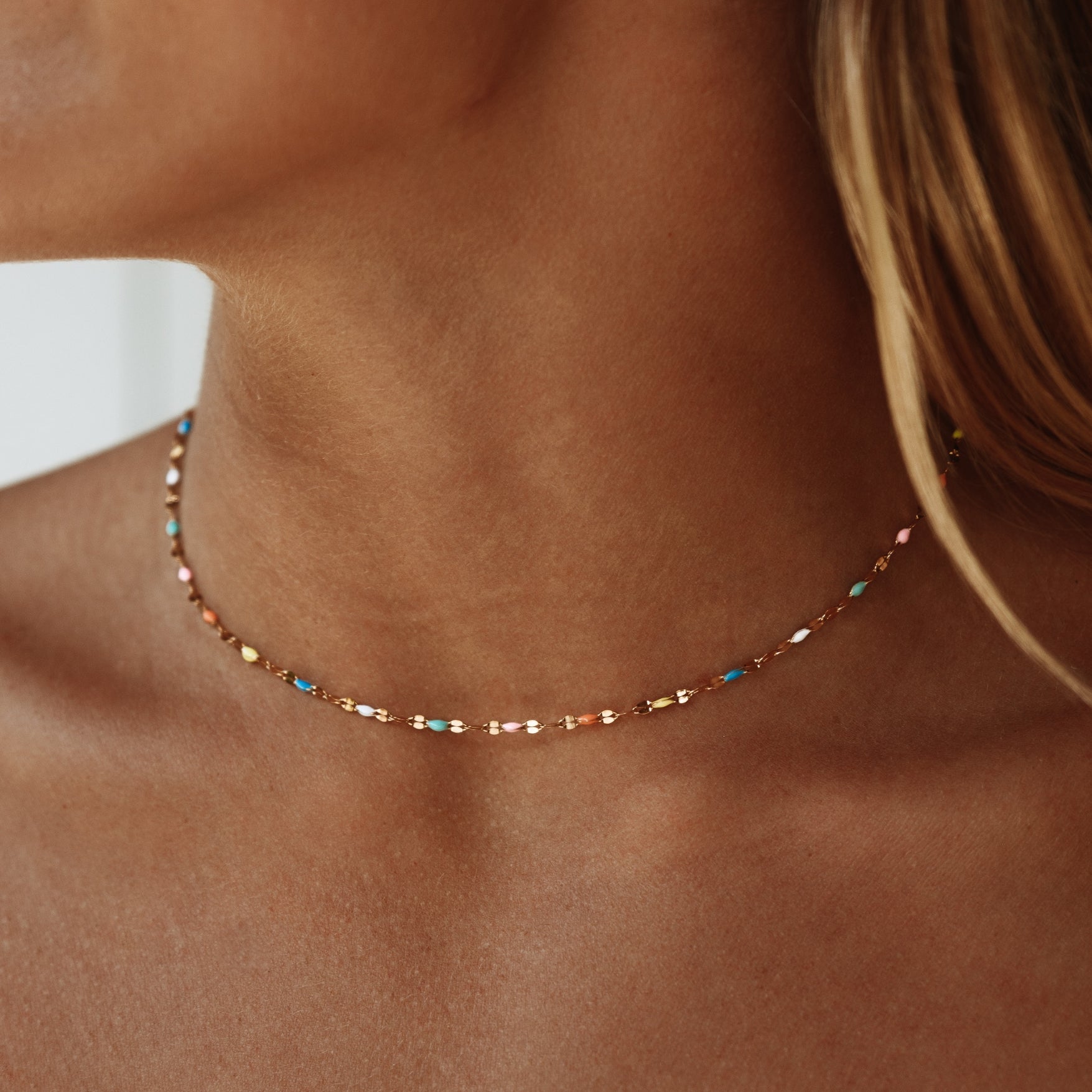
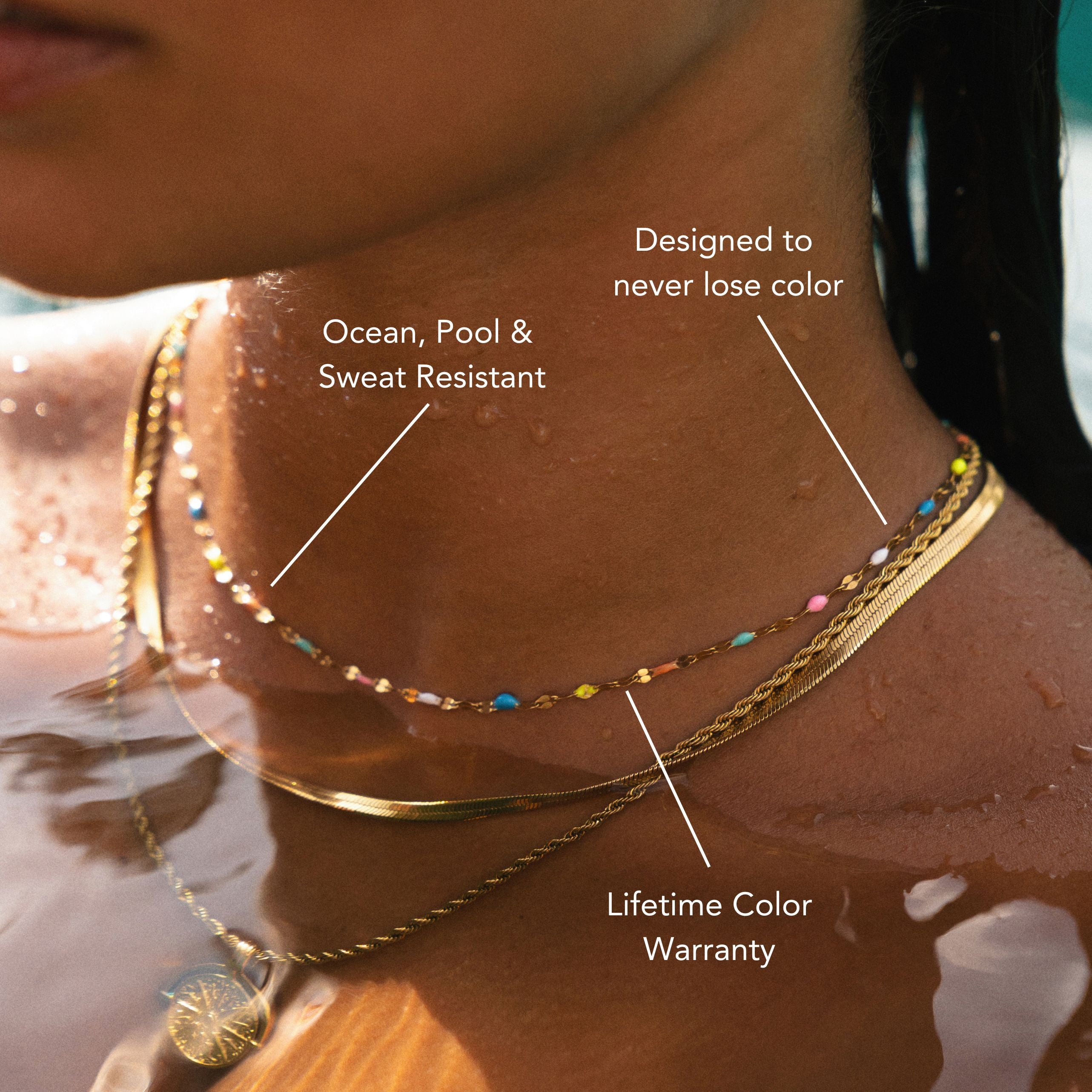
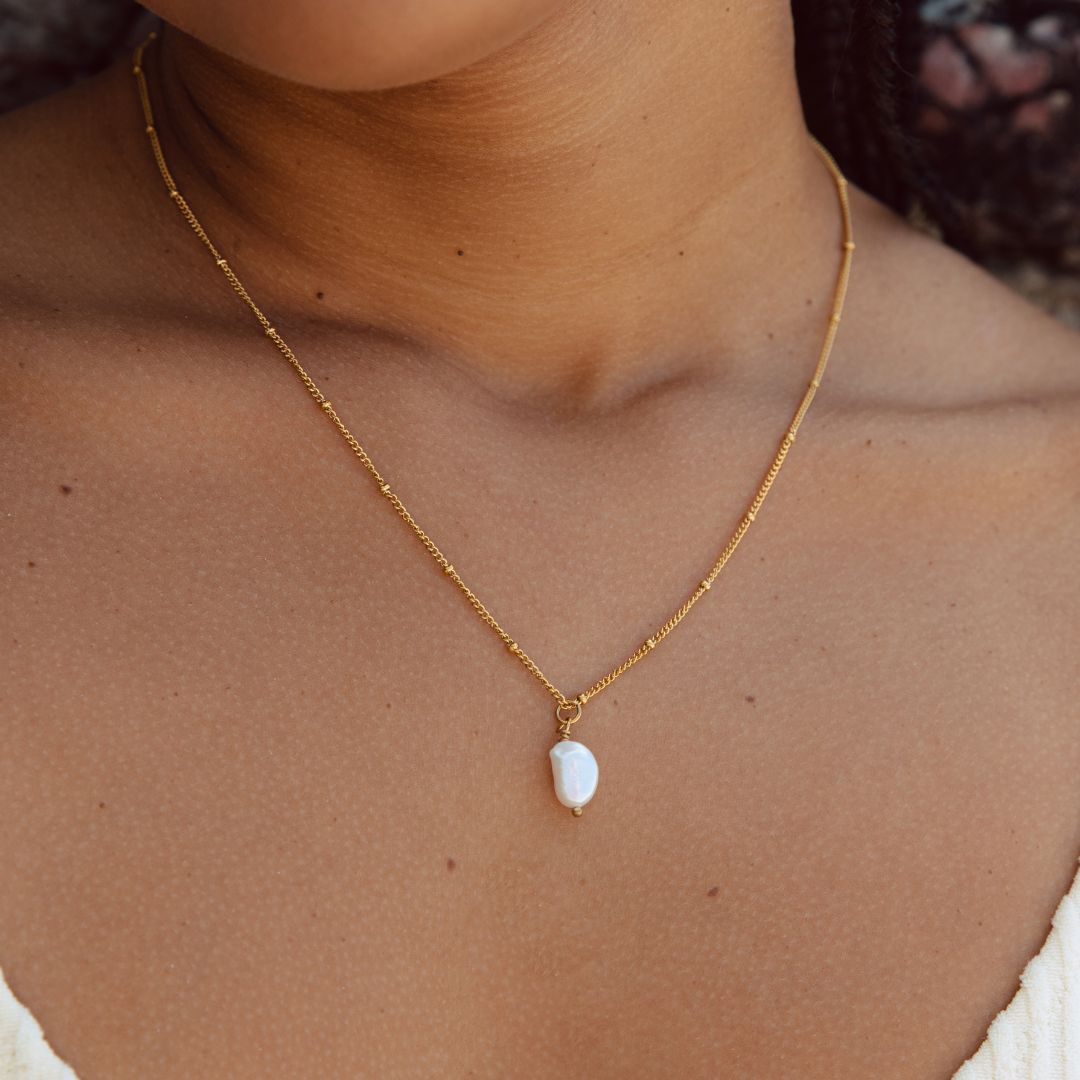

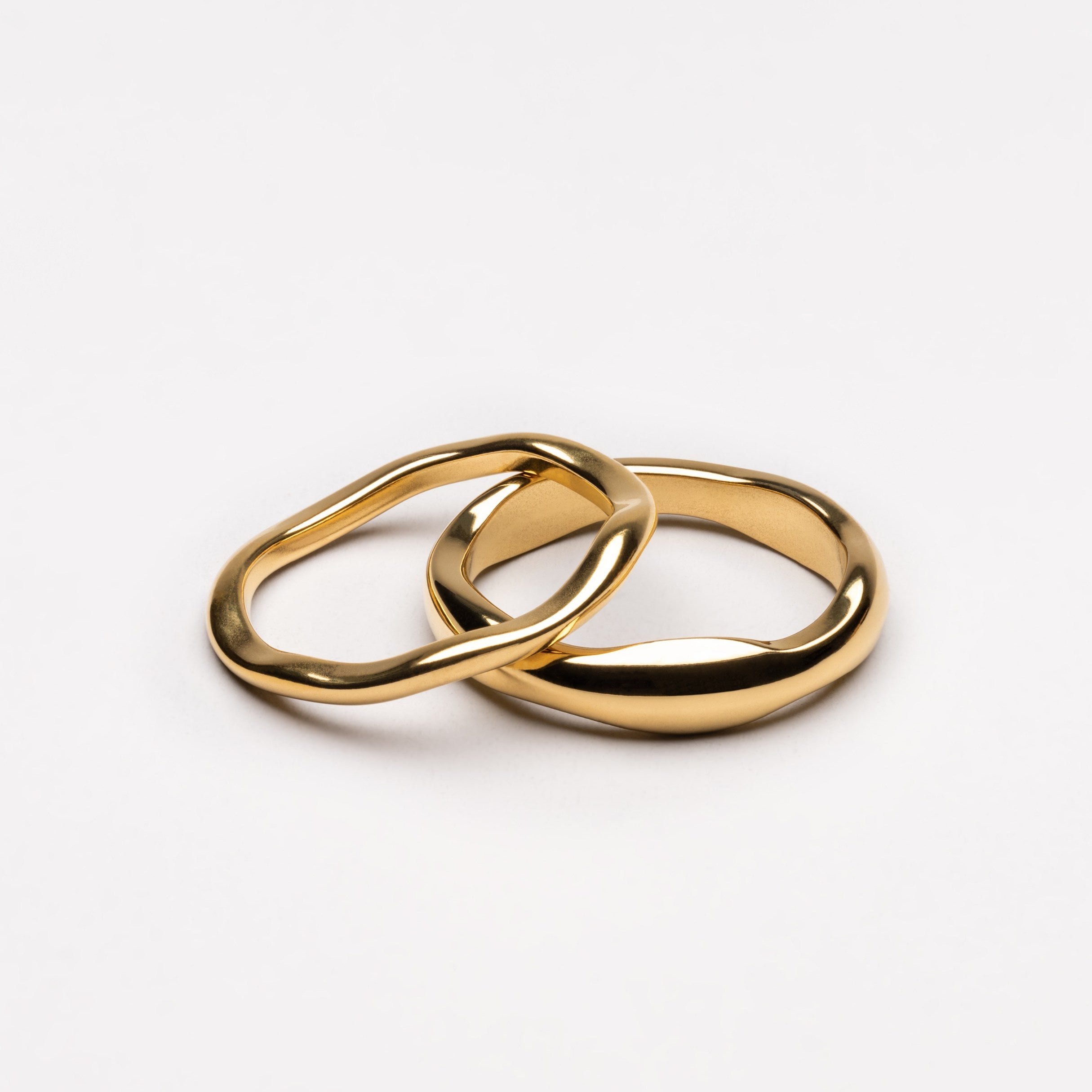


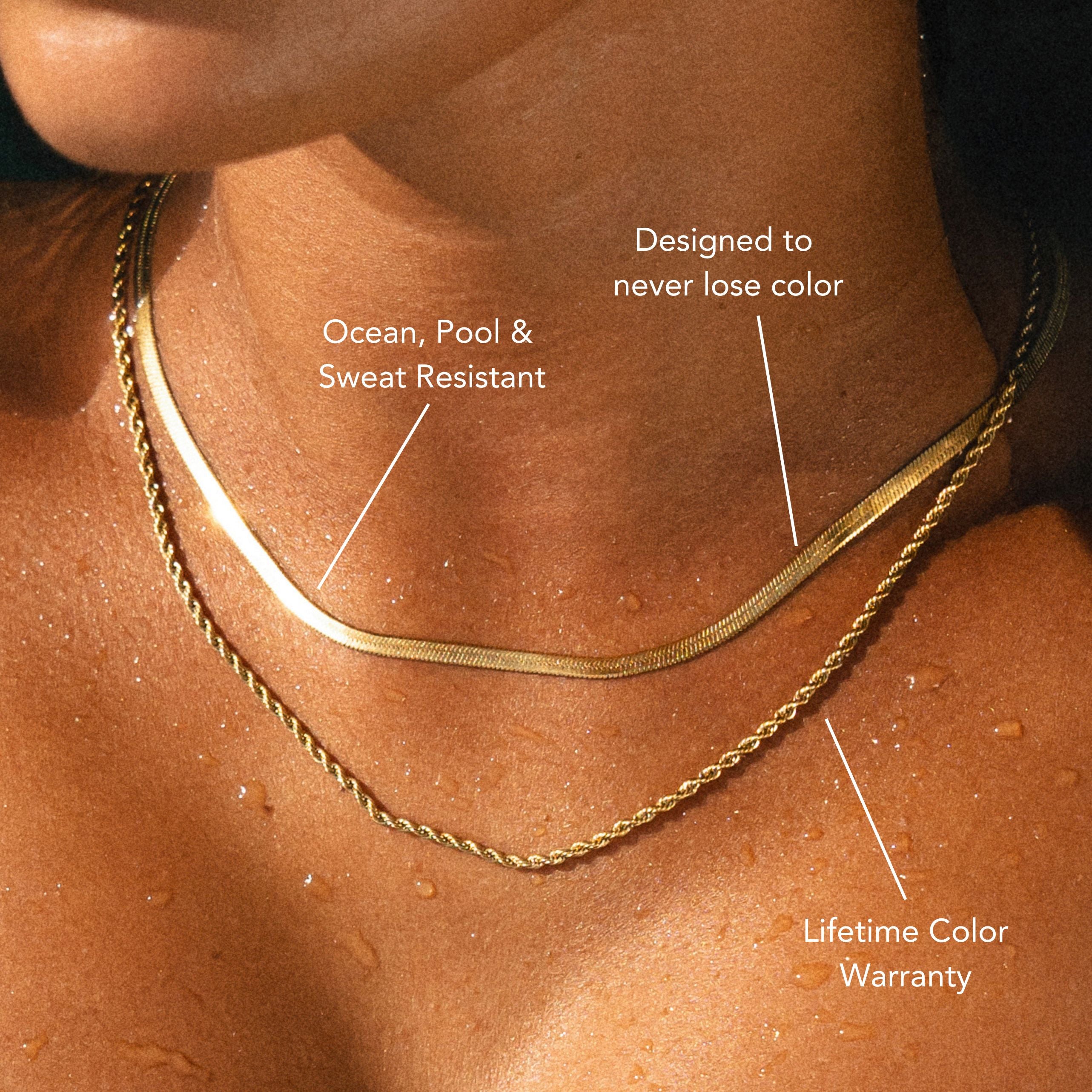
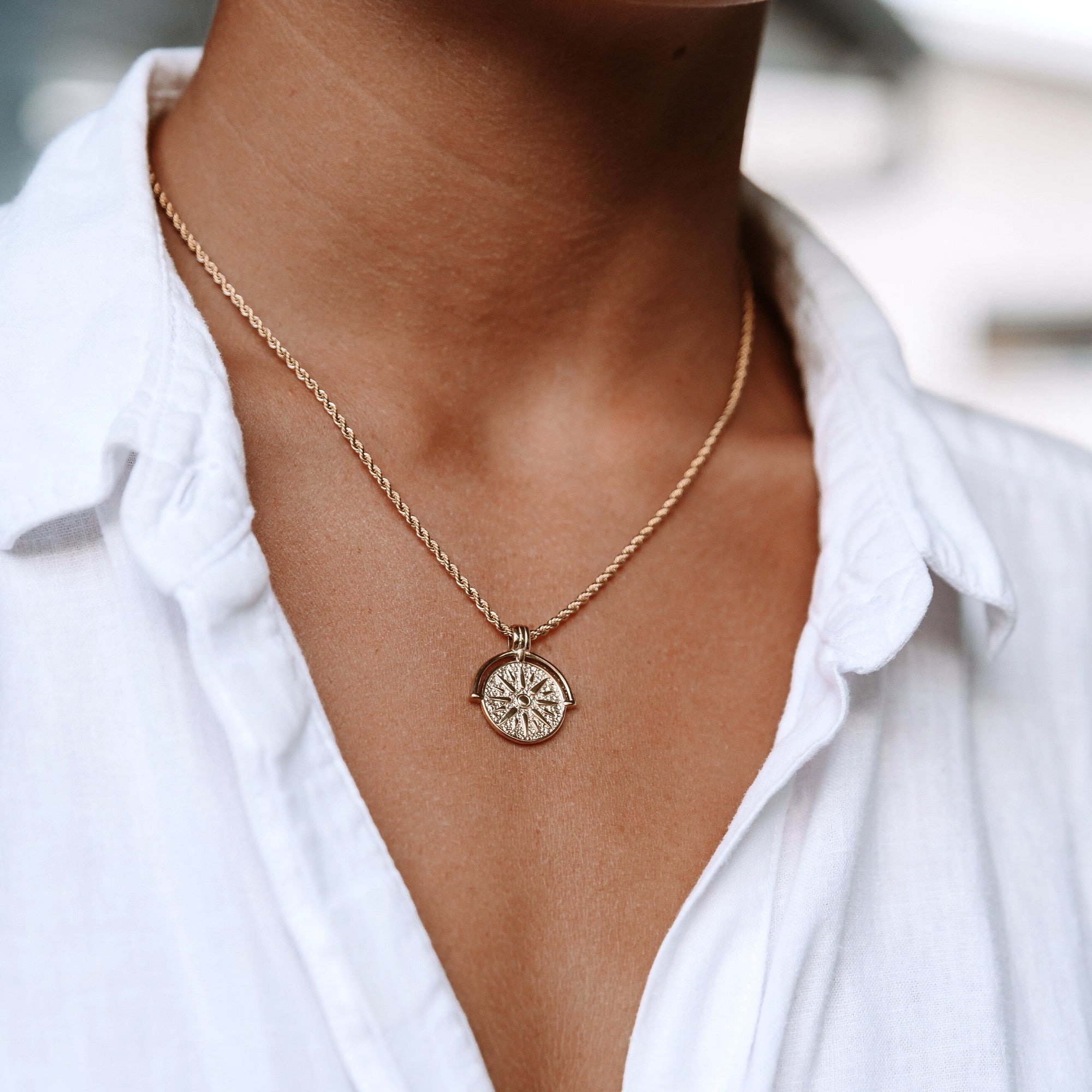
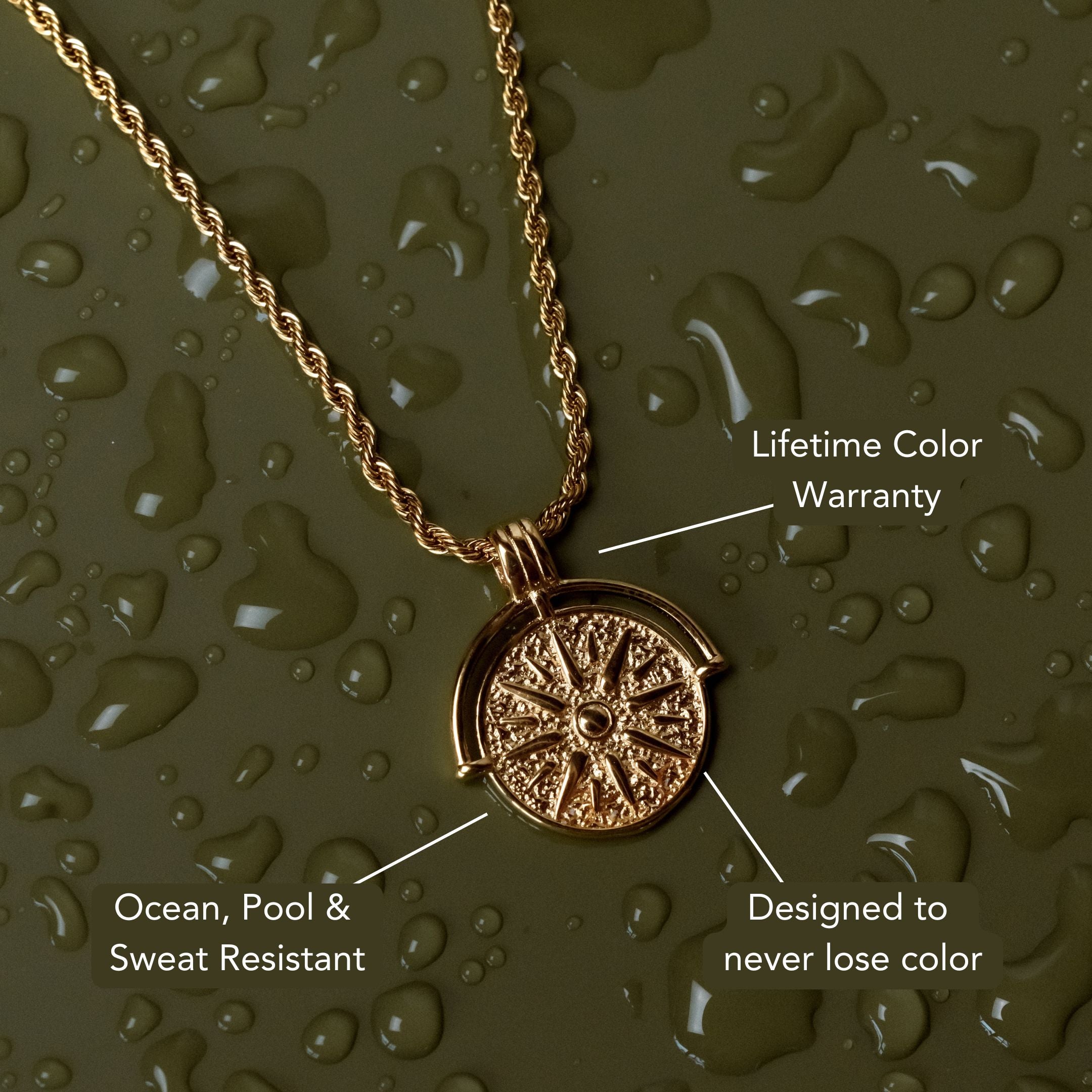
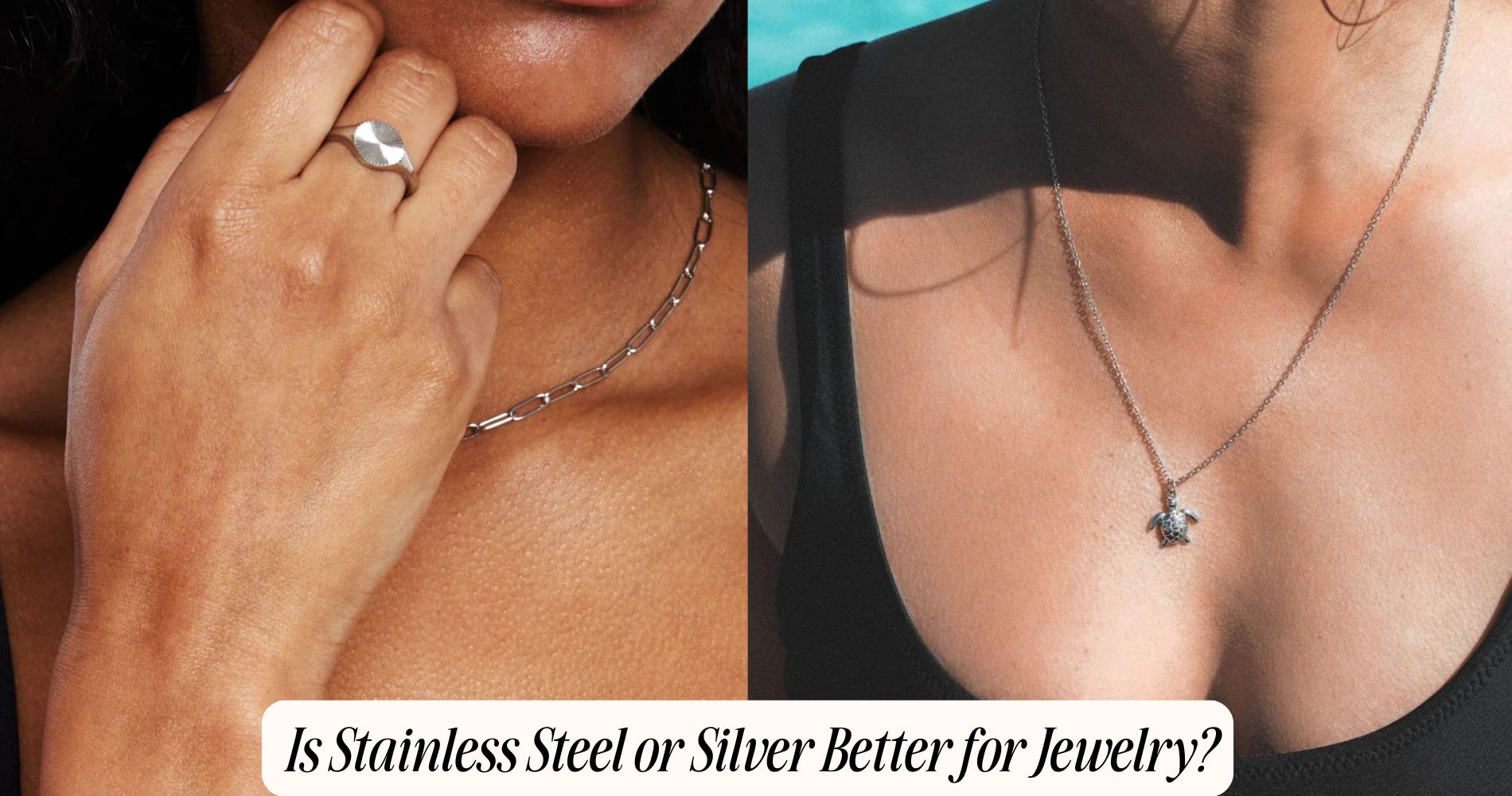
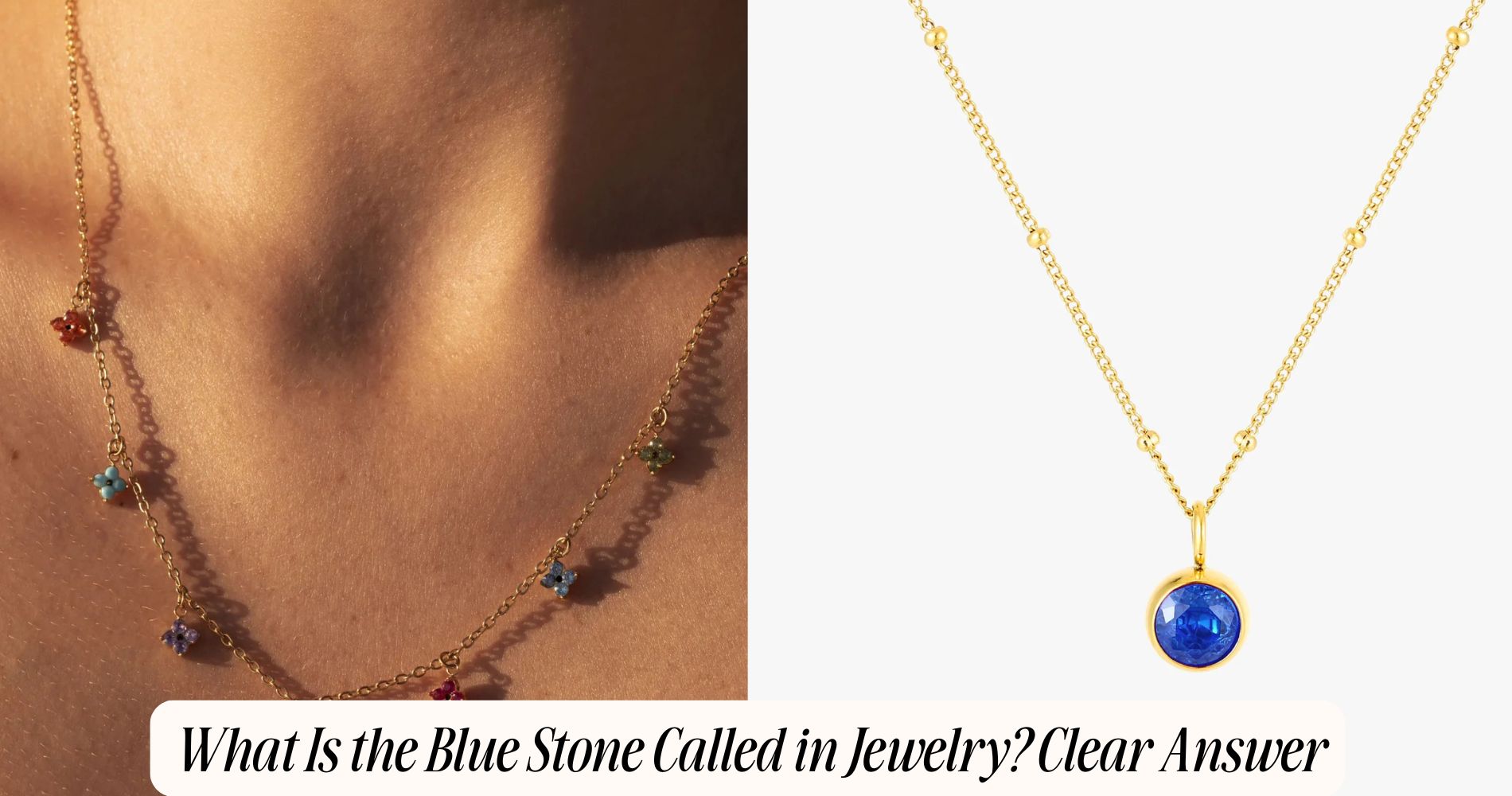




コメントを書く
このサイトはhCaptchaによって保護されており、hCaptchaプライバシーポリシーおよび利用規約が適用されます。